Cairo's Jewel: Al Rifai Mosque's Dazzling Dome & Tombs

Hello there! Are you interested in exploring new places with historical significance? Then, you might want to add Al Rifai Mosque to your list of must-visit destinations. In this blog post, we will discuss the Al Rifai Mosque's overview and its historical significance.
Overview of Al Rifai Mosque and its historical significance:
Al Rifai Mosque is one of the most prominent landmarks in Cairo, Egypt. It is a massive complex that comprises a mosque, a shrine, and a madrassa (Islamic school). The mosque dates back to the 19th century, and it was built as part of a larger project commissioned by Khushyar Hanim, the mother of Khedive Ismail, to establish a separate complex for her family.
The mosque's architecture blends various styles, including Ottoman, Mamluk, and Islamic revival. You can see the beautiful domes, minarets, and intricate ornaments that decorate the exterior and interior of the mosque.
Al Rifai Mosque has played an essential role in the country's history. The mosque was the main place where royal funerals took place, and it had a mausoleum that housed the tombs of many members of the royal family, including King Farouk. It was also a significant rallying point during the 2011 revolution, where it was used as a field hospital.
Al Rifai Mosque is an essential piece of history that not only showcases religious and architectural significance but also plays a significant role in shaping the country's history. If you visit Cairo, don't miss out on visiting this monumental landmark.
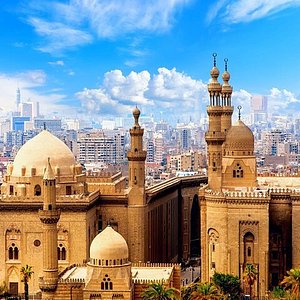
The Architecture of Al Rifai Mosque
Are you fascinated by blending different architectural styles to create a charming landmark? If yes, then Al Rifai Mosque should be on your bucket list of must-visit locations. This blog post will delve into the mosque's architecture and explore its design and symbols.
Design and Layout of the Mosque
The layout and design of Al Rifai Mosque showcase a fusion of various architectural and artistic styles. The mosque's layout comprises different sections, including the main prayer hall, the courtyard, and a mausoleum that houses the tombs of many royal family members.
The mosque's exterior is mesmerizing, featuring domes, minarets, and intricate designs, such as geometric patterns and calligraphy. The most striking feature of the mosque's exterior is the use of black and white marble, which creates a beautiful contrast and enhances the mosque's visual appeal.
Al Rifai Mosque's Dome and Its Symbolism
The main dome of Al Rifai Mosque is one of the largest domes in Cairo, with a diameter of 21 meters. The dome features a unique design, with eight outer sides representing Islam's eight prophets. The interior is ornately decorated with intricate designs, and the dome's centre is inscribed with one of the ninety-nine names of Allah.
The dome symbolizes the Islamic concept of tawhid (oneness of God), a central tenet of the Islamic faith. The use of symmetry and geometric patterns in the dome's design underscores the belief in the unity and organization of the universe under Allah's guidance.
Al Rifai Mosque's architectural brilliance is a true testament to Cairo's rich history and culture. Exploring the mosque's design and symbols can provide a profound insight into the Islamic faith and its influence on art and architecture. Don't miss out on visiting this iconic landmark during your next trip to Cairo.

The History of Al Rifai Mosque
If you're looking for a place with history and cultural significance, Al Rifai Mosque is a must-visit destination. This mosque boasts magnificent architecture steeped in history, with a unique blend of various styles.
The Founding of Al Rifai Mosque
Al Rifai Mosque was established in the late 19th century by Khedive Ismail to honour the memory of his two sons who passed away. It was named after Sheikh Ali Al-Rifai, a revered Sufi scholar and saint. The mosque was designed by a group of renowned architects, including the Belgian architect Ernest Jaspar and the Italian Mario Rossi.
Reconstruction and Expansions Over the Years
Over the years, Al Rifai Mosque has undergone various reconstructions and expansions, contributing to its present-day splendour. In 1905, the two smaller mosques located on either side of Al Rifai Mosque were demolished to expand the mosque's courtyard.
The mosque's most significant renovation was in the 1970s when it was almost entirely rebuilt to extend its capacity. The renovation brought a fascinating blend of traditional and modern styles, with the dominant feature being the eight-sided blue dome.
Al Rifai Mosque's captivating history and exceptional architecture make it an alluring destination for tourists and locals alike. Visiting this mosque offers an insightful glimpse into Cairo's rich culture and heritage.
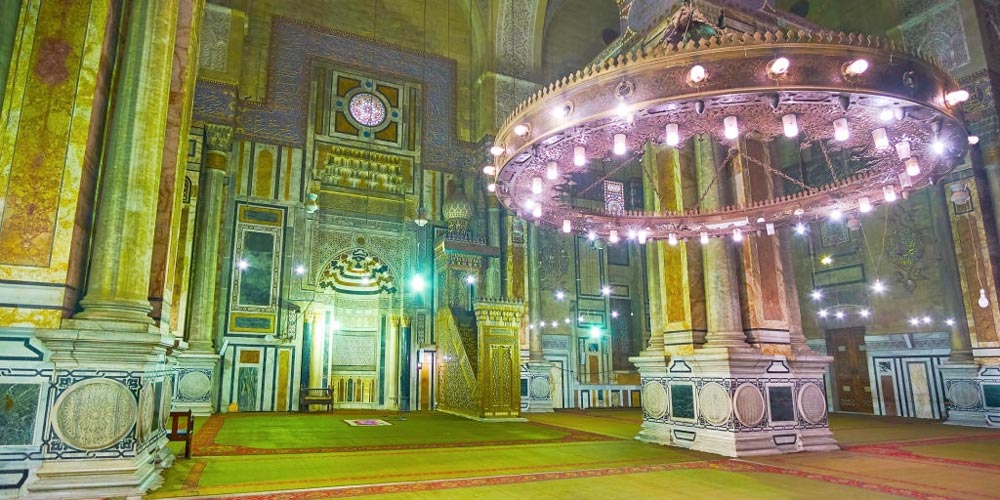
The Tombs at Al Rifai Mosque
Are you interested in exploring royal families' and notable individuals' final resting places? Then, make sure to visit the Al Rifai Mosque. The mosque houses impressive tombs to honour prominent figures from the late 19th and early 20th centuries.
The royals and notable individuals are buried at Al Rifai Mosque
Among the numerous tombs in the mosque are those belonging to members of the Egyptian royal family. You can find the tomb of Khedive Ismail, who was instrumental in building the mosque, and the resting place of his son, Prince Amr Ibrahim, also buried there. Another notable figure whose tomb is at the mosque is Princess Fawzia, the first wife of the former Shah of Iran, among others.
Tomb architecture and design
The tombs at Al Rifai Mosque have exquisite designs, each different from the other. Some have intricate woodwork, while others have impressive marble and alabaster walls. The decor is often gold-plated, with floral and geometric patterns adorning the walls and ceilings. Additionally, some tombs have beautiful domes, like the Qubbat al-Hawwa in the mosque.
Visit Al Rifai Mosque to explore the magnificent tombs of royalty and notable individuals from different periods of Egyptian history and acknowledge the fine architectural designs of the tombs.
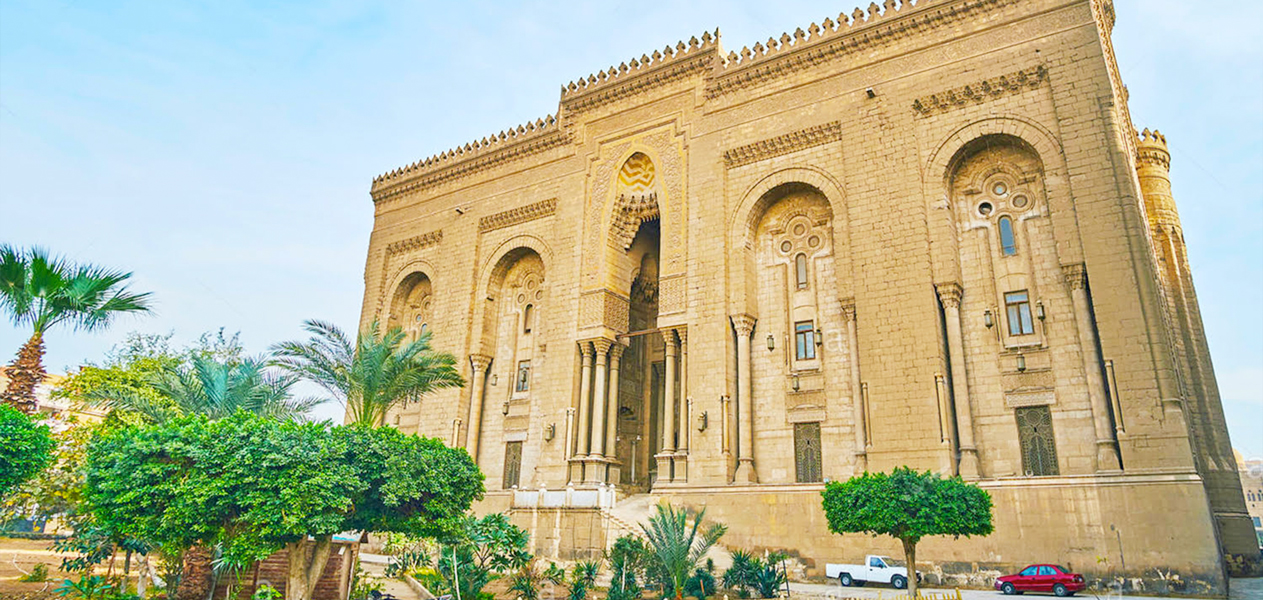
The Dazzling Dome of Al Rifai Mosque
If you're interested in architecture, you'll be amazed by the incredible work put into the dome of Al Rifai Mosque. The dome is one of the most captivating features of the mosque and the one you should not miss. The dome has a rich history that will calm your mind and give you a sense of spirituality.
The unique features of the dome
Unlike other mosque domes, the Al Rifai Mosque dome has a unique design style that's breathtaking to look at. The mosque used a combination of materials to build the dome, including marble, alabaster, and wood. The dome's shape is distinctive from other domes, making it stand out as a work of art.
The use of lighting and colours to enhance the dome’s beauty
Lighting and colours were used to decorate the dome, making it breathtaking. The dome's design and patterns inside the mosque are illuminated by natural light, which radiates through the stained glass. As a result, every section of the dome has a different colour, which enhances its beauty.
During the evening, coloured lights are used outside and inside the mosque to create a mesmerizing view that will awaken you. This use of lighting is perfect for photography enthusiasts who will appreciate the dome's intricate details.
There's no better way to experience the beauty of the Al Rifai Mosque dome than by visiting it yourself. You'll be amazed by the creativity and elegance of the mosque's architecture. Don't miss out on the chance to see one of the best architectural works in Egypt.

The Artistic Elements of Al Rifai Mosque
If you're interested in architecture, you'll love visiting the Al Rifai Mosque. The mosque is a place of worship and a masterpiece of design and creativity. One of the most captivating features of the mosque is the dome, which has a rich history that will fascinate you. Here are some of the artistic elements to keep an eye out for when you visit:
The use of mosaic, marble and other design elements in the mosque
The dome of the Al Rifai Mosque is a stunning work of art that uses various materials, including marble, alabaster, and wood. The use of different materials adds texture and depth to the design. The mosque also incorporates intricate mosaics that adorn the walls and ceilings. The mosaics feature geometric patterns arranged in an endless sea of designs. These designs are masterfully crafted and showcase the attention to detail taken to create them.
The role of art in Islam
Art has always been an important element in Islamic architecture, helping to express religious themes and symbolisms while also contributing to the aesthetic qualities of the mosque. The use of calligraphy, mosaics, and geometric patterns reflects the Islamic belief that art is a way of connecting to Allah. The Al Rifai Mosque is a stunning example of Islamic art and architecture that all should appreciate.
The Al Rifai Mosque is a must-visit destination for art lovers and anyone who appreciates intricate design and creative architecture. Take some time to appreciate all the artistic elements of the mosque, and don't forget to snap some pictures!
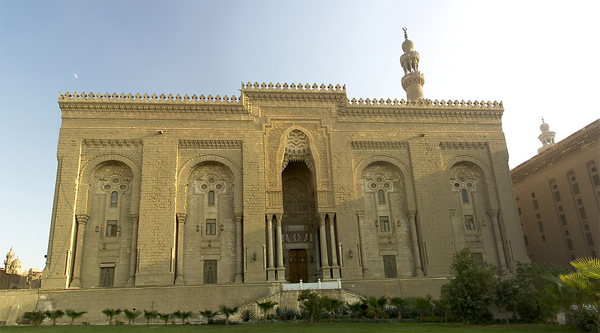
Visiting Al Rifai Mosque
If you're interested in exploring the artistic side of Islamic architecture, then the Al Rifai Mosque is a must-visit destination. Here are some things to keep in mind when planning your visit:
Hours of operation and general information for visitors
The mosque is open to visitors daily from 9:00 am to 5:00 pm, and the entrance fee is 50 Egyptian pounds per person. It's essential to note that the mosque is closed during prayer times, which can vary from day to day. Make sure to check the local prayer times before visiting to avoid disappointment. The mosque can get crowded, so arriving early is best to beat the rush and get the most out of your visit.
Etiquette and dress code when visiting the mosque
Since the Al Rifai Mosque is primarily a place of worship, visitors must dress appropriately and observe proper etiquette when inside. Both men and women must ensure that they cover their arms and legs entirely, and bringing a headscarf to cover your hair is also recommended. Shoes must be removed before entering the mosque, and visitors should be respectful of worshippers by keeping noise levels down and abstaining from taking photos inside the mosque during prayer times.
Visiting the Al Rifai Mosque is an enriching experience that allows you to admire the intricate artistic elements of Islamic architecture and design. By considering the mosque's hours of operation, entrance fee, and dress code, you can enjoy your visit to the fullest while respecting the mosque's religious significance.
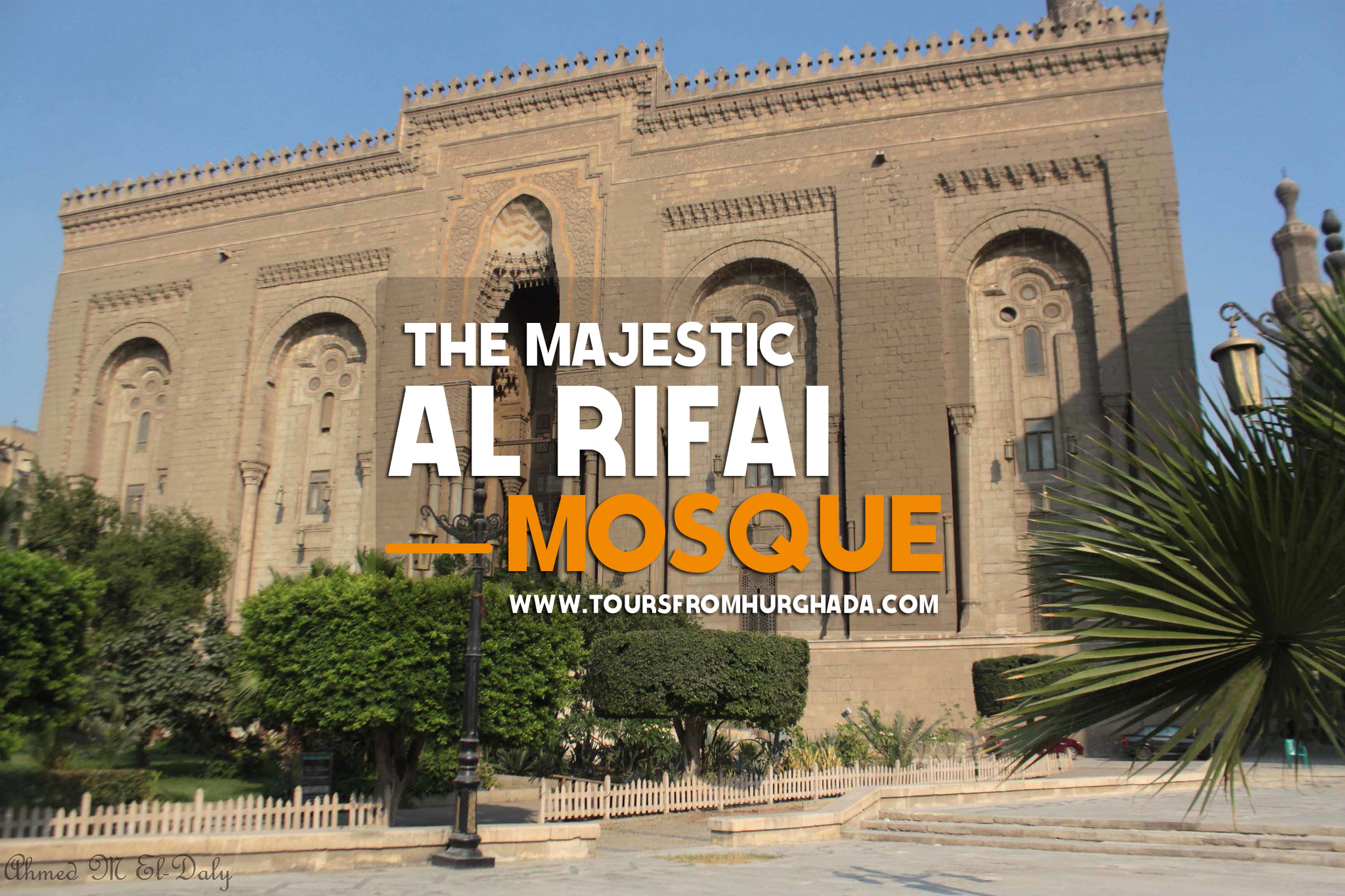
Historical Significance of Al Rifai Mosque
The role the mosque plays in Cairo's history and culture
The Al Rifai Mosque, located in Cairo, is one of the most famous mosques in Egypt. It's believed to have been built on top of a much older mosque, dating back to the 10th century. The mosque has welcomed some of the most important figures in Egypt's modern history, including members of the royal family, political leaders, and prominent scholars. Today, the mosque still holds an important place in Cairo's history and is an active place of worship.
How it has influenced Islamic architecture and culture globally
The Al Rifai Mosque is an excellent example of how Islamic architecture and design can incorporate intricate and beautiful artistic elements. The mosque's design blends Ottoman and Mamluk styles, making it a significant cultural icon. The Al Rifai Mosque's influence can be felt beyond Egypt's borders, with many buildings and structures worldwide inspired by its unique architectural design.
Visiting the Al Rifai Mosque is a chance to appreciate Islamic culture's rich history and architectural beauty. By keeping in mind the mosque's hours of operation, entrance fee, dress code, and etiquette, you'll have an enriching visit while showing respect for the mosque's religious significance.

Recommendations for those interested in visiting
Visiting the Al Rifai Mosque is a chance to appreciate Islamic culture's rich history and architectural beauty. With the guidelines on hours of operation, admission fees, proper dress, and etiquette, you will undoubtedly have a highly enriching visit while respecting the mosque's religious significance.
